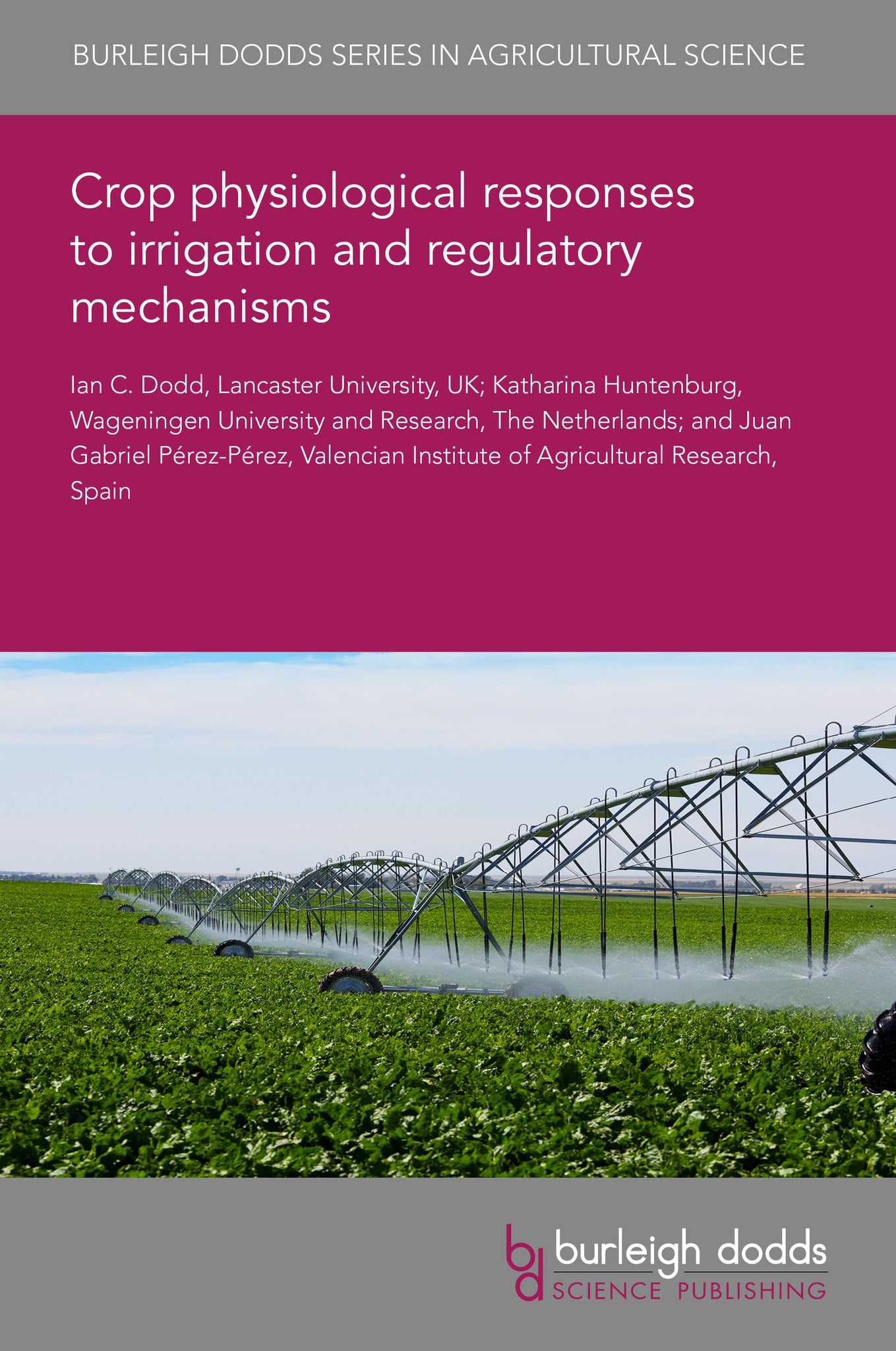We're sorry. An error has occurred
Please cancel or retry.
Crop physiological responses to irrigation and regulatory mechanisms

Some error occured while loading the Quick View. Please close the Quick View and try reloading the page.
Couldn't load pickup availability
- Format:
-
10 June 2024

Irrigated croplands are especially productive but increasing costs of irrigation infrastructure, and political pressures on abstraction, requires enhanced irrigation efficiency. Farmers may be risk-averse to growing with less irrigation, requiring that the irrigation science community develop techniques to maintain or boost productivity while conserving water. Devising deficit irrigation strategies appropriate to specific crops and/or environmental conditions requires understanding mechanisms regulating the relative sensitivity of different yield-determining physiological processes to soil and plant water deficits and utilising appropriate instrumentation to dynamically measure these responses. Two case studies are presented. Restricting water to citrus crops at certain stages of fruit development (regulated deficit irrigation), with water status allowed to fluctuate between defined thresholds, allows water saving while maintaining fruit growth. Partial rootzone drying of tomato crops stimulated root-to-shoot signalling to increase water use efficiency while maintaining root and fruit growth at the expense of shoot growth.

TECHNOLOGY & ENGINEERING / Agriculture / Irrigation, Sustainable agriculture, TECHNOLOGY & ENGINEERING / Agriculture / Agronomy / Crop Science, TECHNOLOGY & ENGINEERING / Agriculture / Sustainable Agriculture, Irrigation and water management, Agricultural science, Agronomy and crop production

- 1 Introduction
- 2 Crop physiological responses to soil water deficit
- 3 Regulated deficit irrigation of citrus
- 4 Partial rootzone drying of tomato
- 5 Conclusion and future trends
- 6 Where to look for further information
- 7 Acknowledgements
- 8 References



